Welcome to Volume 2 of Math + Code!
Please take a peek at the 9 exciting articles below.
Use the Tweet link at the top of each page to share articles you like (or even the whole issue using the Tweet link on this page) with colleagues and friends.
Featured Articles
 Shooting Stars & Fireflies – Gabriella Solti
Shooting Stars & Fireflies – Gabriella Solti
Using accessible technology to access and create digital art and visualization. Using simple creative construction techniques, clear food wrap and tiny multicolour flashing LED lights we can make small, lightweight and soft light balls that will rhythmically change their colour through a multitude of vibrant colours. This light ball can be used in choreographing the patterns of both fireflies and meteor showers.
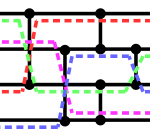 Literally Stepping Through Algorithms – Neil Smith & Helen Caldwell
Literally Stepping Through Algorithms – Neil Smith & Helen Caldwell
Sorting networks work as an “unplugged” activity, with students moving through a physical sorting network, is a group activity where students become the items being sorted. We have made large sorting networks from coloured masking tape on the floor of a room, with people holding large playing cards as the items to be sorted. Students literally step through the algorithm, being acted on it as the algorithm progresses.
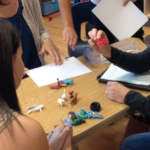 Introducing Coding to Pre-Service Teachers – Donna Kotsopoulos & Julie Mueller
Introducing Coding to Pre-Service Teachers – Donna Kotsopoulos & Julie Mueller
This past year, we introduced coding in all of the pre-service mathematics education courses in the primary/junior and junior/intermediate divisions at Wilfrid Laurier University. Our decision to do so was based on our view that coding was a “disruptive pedagogy”. We introduced coding despite having no knowledge of coding ourselves.
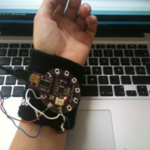 Fusion of Art & Computational Thinking – Marja Miller & Steven Wojnarski
Fusion of Art & Computational Thinking – Marja Miller & Steven Wojnarski
How do we help students become creative math problem solvers? How can computational thinking help? And how does art fit in all of this? The LilyPad Arduino can be used to teach mathematical concepts, such as algorithms, cryptography, patterns, functions, input and output, and geometry while creating a work of art. A specific example of how math can be taught with the LilyPad is making a secret decoder wristband (shown on the left).
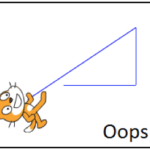 Problem Solving + Coding – Steven Floyd
Problem Solving + Coding – Steven Floyd
To effectively teach problem solving strategies teachers need genuine problems that can be solved in a variety of ways and that allow students to consider the problem solving processes used. They also need a problem solving context in which feedback is immediate and the cost of each trial is low. This leads to more problem solving attempts and allows the student to own and accept their errors.
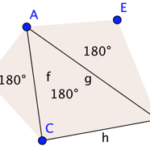 Teaching Students Attention to Detail Through Code – Enzo Ciardelli
Teaching Students Attention to Detail Through Code – Enzo Ciardelli
Having taught mathematics for more than ten years at various grade levels, I gravitate to tools and practices that promote high interest and learning in the classroom. Since integrating coding, these desired results were immediate. Above all else, students are actively engaged and dare I say – fixated – to reach a goal.
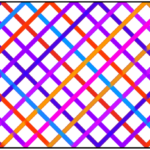 Making Art with Math + Code – Chris Yiu
Making Art with Math + Code – Chris Yiu
Inspired by the math + code art of Bill Ralph (Brock University), George Gadanidis & Chris Yiu set out to create a block-based coding environment that kids could use to mathematically control “painting” objects. The math-coding-art environment was created using Blockly. Give it a try using our first tutorial and code your next math-art masterpiece.
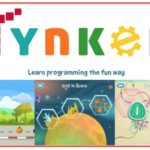 Review of 3 Math + Coding Initiatives – Jordan Lenjosek
Review of 3 Math + Coding Initiatives – Jordan Lenjosek
There are numerous initiatives aimed at introducing children to the world of computer coding. A few of these initiatives explore the special relationship between mathematics and computer coding. Linking coding and mathematics can help students develop essential math concepts in a unique and engaging learning environment, with opportunities to visualize abstract concepts and make real-world connections.
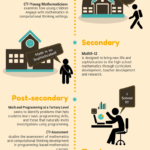 Researching CT in Math Ed – Rosa Cendros
Researching CT in Math Ed – Rosa Cendros
Everyone seems to be talking about the need for students to learn top code. How should this happen? Should coding be its own subject? The Computational Thinking in Mathematics Education (ctmath.ca) partnership explores the use of CT in math education, from pre-school to undergraduate mathematics, and in mathematics teacher education.

